
Our third teenager will be homeschooling high school soon and it has me doing a lot of soul-searching! His older brothers will be rising seniors and I don’t want to repeat the mistakes I made with them. While our approach to high school hasn’t changed, I’ve learned some things that will make the journey smoother this time.
Here’s the then & now of how we planned — and our four-year plan for teen #3!
Planning to Homeschool High School: Then & Now
Potential colleges
Then: we had a general idea of where my older two were headed but we didn’t look at requirements until they were in 10th grade. I also didn’t look at a wide range of schools. If their plans had changed significantly, they wouldn’t be prepared for a different type of school.
Now: I asked my rising freshman if he knew what he wanted to do after high school. All he knew was that it would have something to do with electrical work.
We then used the College Board’s Major and Career Search to learn about potential paths based on his interests. This helped him drill down to electrical field work and electrical systems technology.
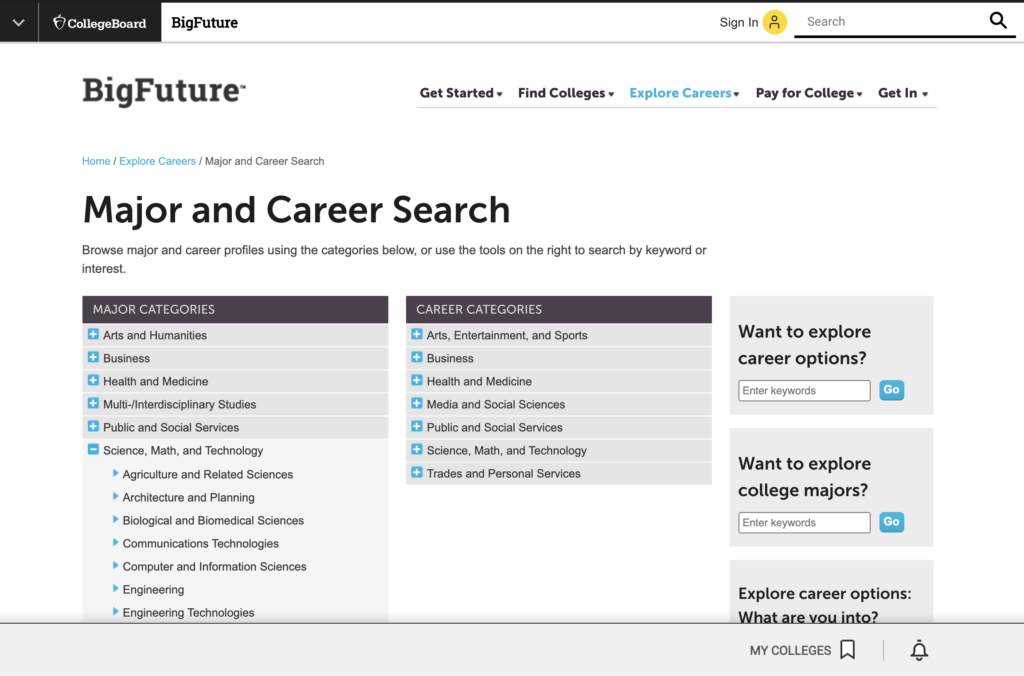
From there, we looked at our local tech school as well as Harmel Academy, an amazing trade school for Catholic men in Grand Rapids, Michigan.
Harmel combines training in the skilled trades with a read/discuss humanities curriculum that prepares each man to live out his vocation as a Christian, a family man, a citizen, and a tradesman.

Neither of the schools recommends a specific course of study for high school. Harmel, however, requires a resume that “conveys more about the student’s life, accomplishments and interests.”
This tells me to leave room in our high school plan for hands-on experience, etc.
I also wanted to be sure our high school plan will let him enter other STEM-based programs. I took a look at our state university’s requirements to get a benchmark for this.
Strengths & weaknesses
Then: I was aware of my children’s weaknesses, but I still wanted the high school vision I had in my head.
Instead of starting where they were at and gently stretching — which would have eventually led us to that vision — I threw them in the deep end (several times). This led to backtracking, missed opportunities, and slower progress.
Now: I took a much longer look at where this particular child is at. I had to be honest about his current weaknesses and how those could affect him. I had to assess where he is at and what he is capable of, and then structure a plan that lets him reach that potential one step at a time.
Limitations
Then: I didn’t accept my own limitations of time, health, and knowledge. I over-planned and under-delivered every. single. year.
I then spent the entire year feeling guilty.
Now: It’s can be a fine line between limitations and motivation. I had to make sure our plan was realistic based on my limitations, but I didn’t want to make it easy based on my fallen human nature.
Our Plan for Homeschooling High School
This post contains affiliate links. Links to free items may place an affiliate cookie on your device for future purchases. Purchases help support our family at no additional cost to you. For more details, see our full disclosure and privacy policy.
Here is our plan for homeschooling high school! (Right-click to enlarge)
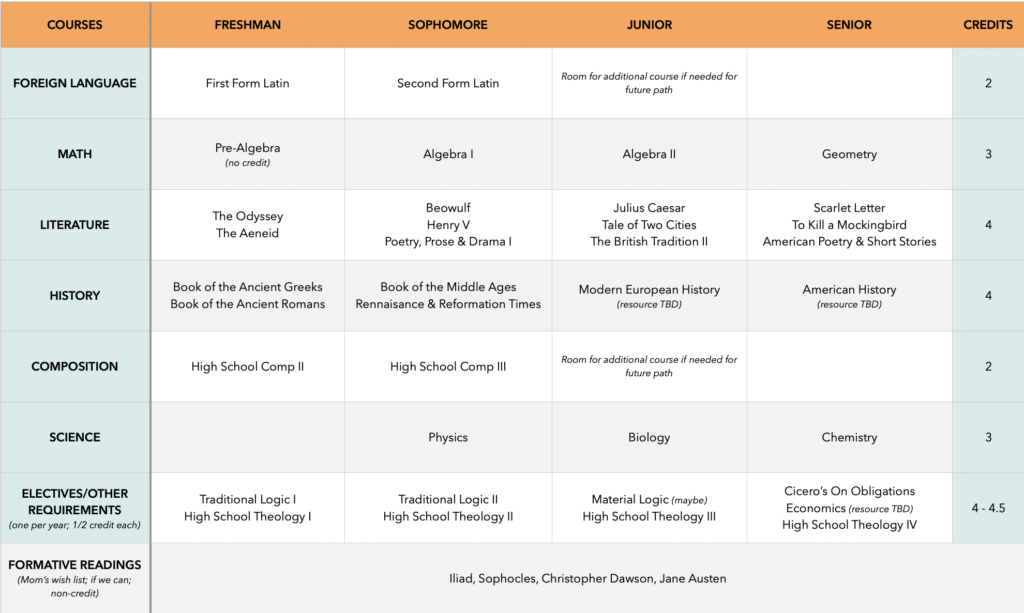
Foreign Language
Courses: First Form Latin and Second Form Latin
We require the kids to complete the Latin grammar because it allows them to get most of the benefits of Latin.
I know reading classic works, with all the nuance and meaning of the original language, is the ultimate benefit of Latin; but I let the kids decide whether to continue to that stage. I hope they do!
Unfortunately, this particular child has had a rough journey with Latin. He’s been working on Second Form Latin for two years and is still struggling. We ended up with a lot of inconsistency due to my health and other things (#life) but I was trying to get us on track to start Third Form this fall.
Then I spoke with a good friend who is a Memoria Press veteran. And you know what? Her advice had me crying in relief.
Seriously, tears were there.
She told me to get the new edition of FIRST Form Latin and have him start from the beginning with the deeper level of work that is in it. After that, we’ll use the new edition of Second Form Latin.
Because what is the point of getting to Third Form if he barely understands First and Second?!
She also reminded me that homeschooling high school means I am my son’s teacher. At the end of the day, I’m the one who determines what is credit worthy and what is not (within reason/state requirements, of course).
We’re counting each Form as a high school credit due to the amount of work it requires.
Math
Courses: Pre-Algebra, Algebra I, Algebra II, Geometry
My son wasn’t ready for pre-algebra in 8th grade, so he’ll be taking it his freshman year. No one accepts pre-algebra as a high school credit but he’ll still have three years left for higher math.
If his plan changes and he needs a fourth math credit, our math program can flex to fit that in.
Literature & Composition
Courses: Classical Epics, Medieval Literature, European & British Literature, American Literature
These subjects really required me to step back from the vision in my head. I would love for him to do the full literature packages from Memoria Press, but I know we don’t have the bandwidth to do them well.
Instead, we’ll use two works from Memoria’s literature selections each year and a selection of poems from their poetry anthologies. This will allow us to take our time with each work and go deeply into the student guide assignments, building modern essay skills along the way.
For his freshman year, we’ll be using MP’s Odyssey and Aeneid courses for literature while we study Greece and Rome in history.
He’ll also continue composition courses with Memoria’s online academy.
History
Courses: Classical History, Medieval & Renaissance, Modern European, American
Understanding the cultures of Greece and Rome is critical to history study. Their ideals, thoughts, failures, and accomplishments pervade every time period since the classical age!
Because of this, we’ll be starting high school history with the Book of the Ancient Greeks and Book of the Ancient Romans. We’ll study one each semester with a corresponding epic from that culture.
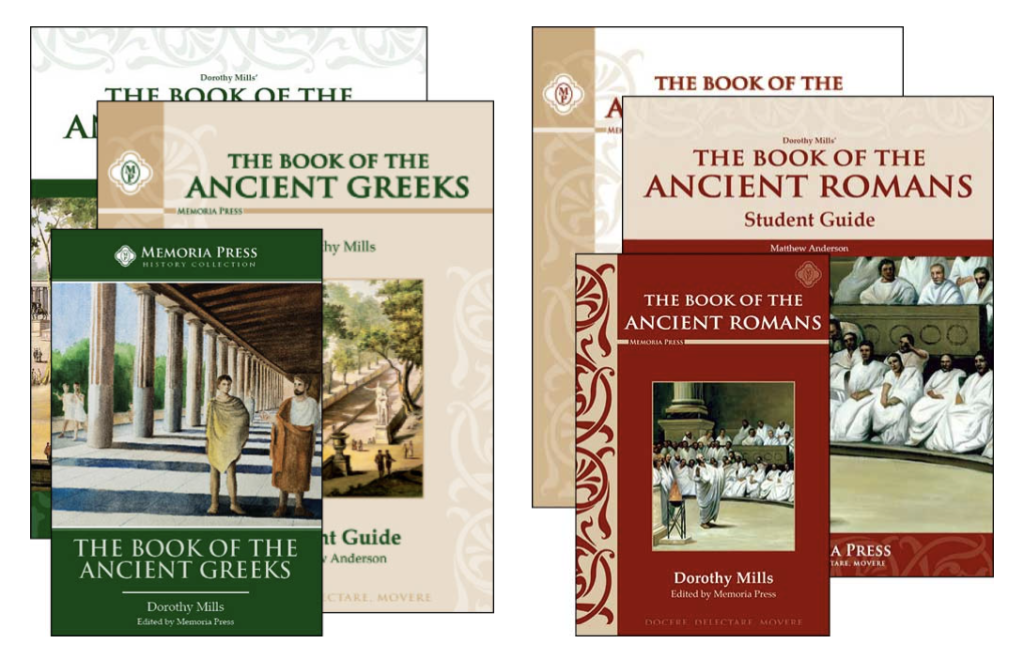
Even though we chose The Odyssey for our Greek semester (it’s our favorite!). The Iliad will be part of his free reading during high school. We’ll then study The Aeneid during our Rome semester.
In subsequent years, we’ll study the Middle Ages, the Renaissance, modern Europe, and American history.
For his government semester, I would like to use Cicero’s On Obligations and we’ll then choose a semester-long economics course.
Science
Courses: Physics, Biology, Chemistry
Because he’s not in algebra yet, we need to wait a year on higher sciences. I made the mistake of putting his brothers in physics when they were only in pre-algebra. It didn’t end well.
The current plan will allow for three years of higher sciences which still meets the benchmark for our most competitive state university.
Electives
Courses: Traditional Logic, Didache Theology Series
Our planned electives include logic and an amazing high school theology program taught at our parish. Additional electives can come from large projects (auto restoration is a favorite here!), volunteer positions, etc.
Learning to Be Okay
When the kids are struggling with contentment or patience, I tell them it’s a chance to “learn to be okay” with the here and now.
But I’ve found that “being okay” is still hard when you’re an adult. Our plan for homeschooling high school won’t meet other moms’ expectations or opinions, but it’s realistic for us and I know we can do it well.
I have to remember that rich doesn’t mean much; it means deep. This plan will allow us to go deep.
I can be more than okay!
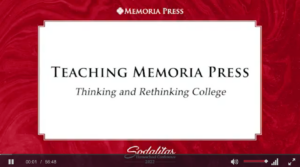
Check out this recorded talk “Thinking and Rethinking College” — from myself and my friend, Julie!
(Click the link above, select “Teaching with Memoria Press” in the sidebar, and scroll to second video.)
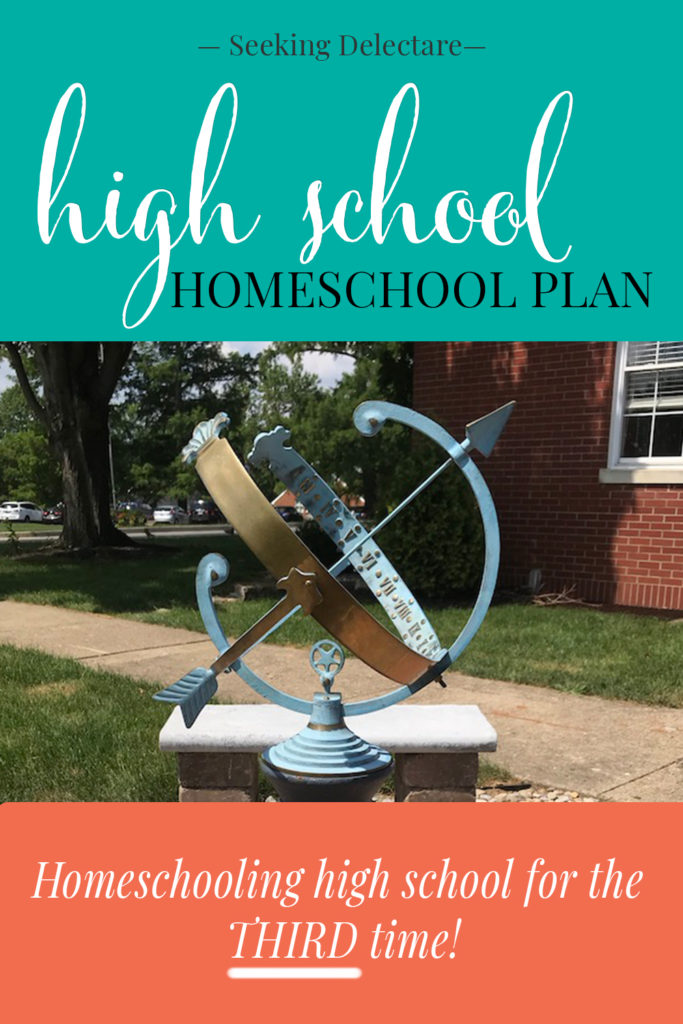



Would you mind sharing what you ended up choosing for your upper high school level courses or what you’re planning to do? Also, I was wondering if you feel that the Iliad is a necessary prerequisite for the Odyssey? Thanks for all your insight!
This child’s trajectory ended up going differently than planned due to a variety of factors, but I can share what my current high schoolers have done/are doing. Last year one was in 8th and the other was in 9th but they were (mostly) using the same materials:
Last year (8th/9th)
Latin – 8th grader in SFL, 9th grader in FFL
Math – Denison Pre-Algebra
Literature – Odyssey & Aeneid
History – Book of Ancient Greeks & Book of Ancient Romans
Composition – Fable/Narrative
9th/10th
Latin – 9th in TFL, 10th in SFL
Math – finishing Denison Pre-Algebra and starting Denison Algebra I
Literature – Beowulf, British Tradition I, and Henry V
History – Chapters 1-4 of Light to the Nations I, followed by Book of the Middle Ages, and Renaissance/Reformation Times
Composition – Chreia/Maxim
Science – Friendly Biology
We plan to continue with Friendly for science and Denison for math. After this year, history will switch to the Catholic Textbook Project. Latin will continue through the Forms as far as each child is able (we have some learning challenges that can affect this). Literature will continue to be selections from MP. Composition will continue through Common Topic. That’s the plan, anyway, LOL.
As for Iliad and Odyssey: it’s always ideal to read the Iliad before the Odyssey, but I needed to streamline due to life circumstances. Since I could only choose one, I chose the Odyssey as they had already studied Olivia Coolidge’s The Trojan War and therefore had already studied the story arc of the Iliad. The Odyssey allowed us to close the story of the war and its heroes.
Do you use all of the Catholic Textbook Project books and break them up by semester or do you choose specific ones? Also, what do you do for Government and Economics? Thanks 🙂
Our history plans/curriculum have varied by child. My older two used Light to the Nations 1 for Medieval History. My third didn’t use anything from CTP. My current high schoolers will be using a few chapters from Light to the Nations 1 this year. I plan to use Light to the Nations 2 next year, and we’ll likely use CTP’s high school level American history the year after that. My current middle schooler will be using CTP’s Sea to Shining Sea this year for middle school level American history.
I haven’t found a government/economics that I’m completely sold on, so I don’t feel I can honestly recommend one yet. Our state doesn’t have curriculum/course requirements so we’ll probably just cover government in the context of our high school American history study.
This is incredibly helpful! Thank you! I am eager to see what resources you use for those final two years of history.